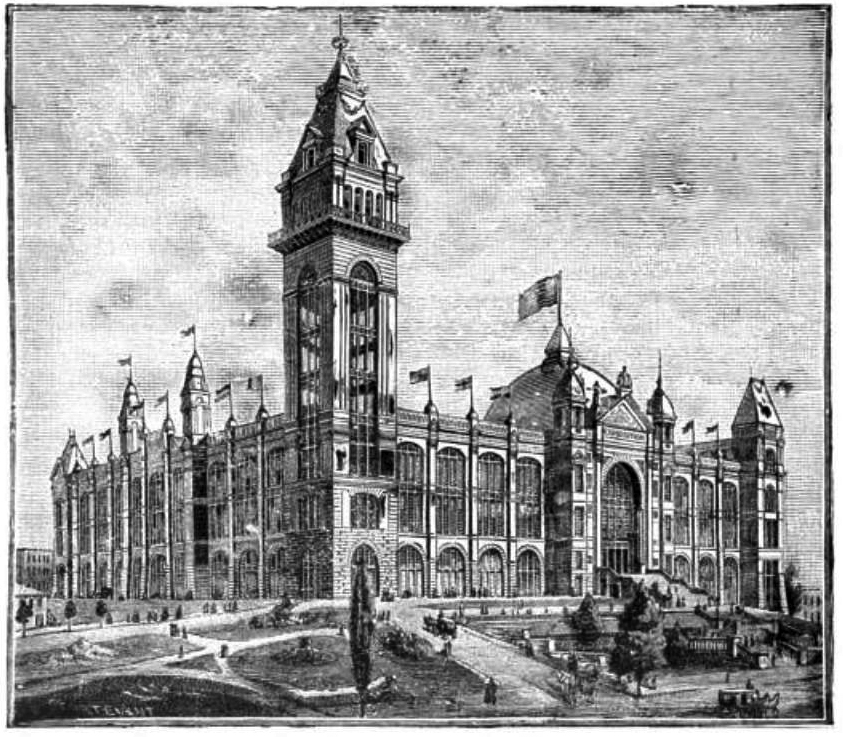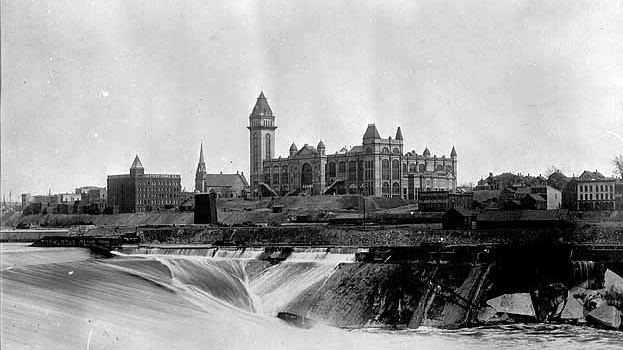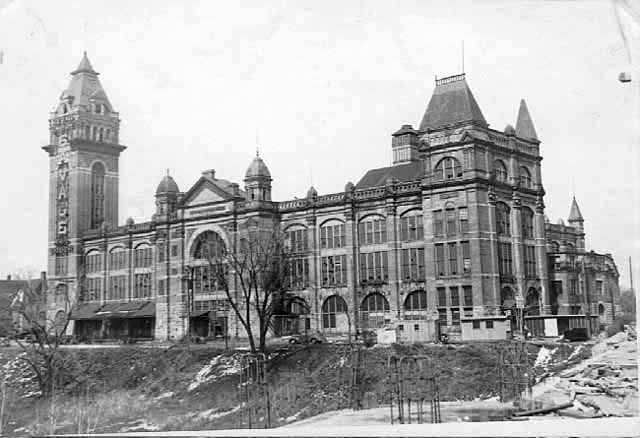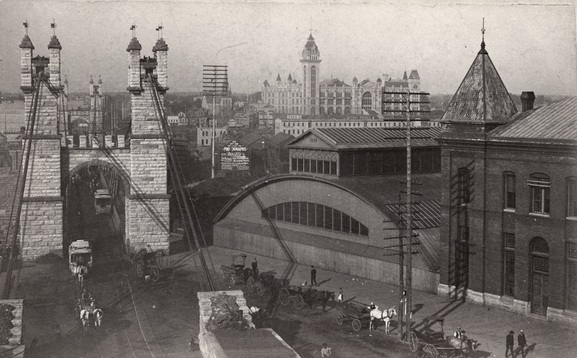The Minneapolis Industrial Exposition
Minneapolis’ most prominent citizens were shocked when they learned that the Minnesota State Fair chose to take up permanent residence in St. Paul. Shortly after the official announcement was made, Minneapolitans sprang into action. Their plan was to create a fair in Minneapolis to rival the one in St. Paul. In 1885, an idea was born to create an exposition centered around industry and technology rather than agriculture. Citizens rallied around the idea that industry and technology were the future of Minnesota, and agriculture was the past.
By December 15, 1885, supporters had raised more than $250,000 in public funds and began discussing where to build a modern building to house the exposition. Eventually, the site of the Winslow House Hotel in southeast Minneapolis was chosen and the hotel was quickly razed so construction could begin as soon as possible. The committee in charge of planning the exposition wanted the first fair to begin in August 1886—so they had less than nine months to construct the building and create exhibits for the fair. A building design by Isaac Hodgson and Son was chosen and the cornerstone was set on May 29, 1886, with much fanfare. The idea of the exposition and the modern building were so popular with the citizens of Minneapolis that over 5,000 people attended the public ceremony.


The Minneapolis Exposition building was constructed at 101 Central Avenue SE with Mankato stone and cream-colored bricks. The main part of the building consisted of three stories and contained over seven-acres of floor space. A grand dome faced Main Street and the interior walls of the dome were filled with bas-relief sculptures. At the corner of the building, a 240-foot tower added an additional five stories. To get to the top, a state-of-the-art, two passenger elevator carried guests to the eighth-floor observation deck. The tower was the tallest structure in Minneapolis until the Foshay Tower was constructed.
Inside, the building was separated into two areas—one portion of the building featured fine art from around the world and the other held the industrial and technology exhibits. Visitors could pack their own lunch and eat in one of the many dining rooms, or try to get a seat at the popular restaurant that was nearly always filled to capacity.
The first exposition opened on August 23, 1886, and ran through October 2. President Grover Cleveland and his wife, Frances, were invited to attend the opening ceremony but were not able to make the trip. Instead, they sent an address to be read at the ceremony.
With many thanks for the kind message sent to us by the officers and directors of the Minneapolis Industrial Exposition, Mrs. Cleveland joins with me in tendering to them a hearty congratulations upon the auspicious inauguration of an exhibition which not only demonstrates the prosperity and progress of the great Northwest, but also reflects credit upon a country whose greatest pride is the happiness and contentment of its people and their enjoyment of all the gifts of God. Mrs. Cleveland gladly complies with your request and will set in motion the machinery of the Exposition. She now awaits your signal. — Grover Cleveland


In a grand show of modern technology, Mrs. Cleveland pressed a button in their New York home that started all of the machinery at the building in Minneapolis. The crowd was in awe and the applause that roared throughout the building was loud enough to drown out the noise of the machinery. Thousands of free passes were distributed and thousands more paid for tickets during the weeks the exposition was open. The fair averaged around 15,000 visitors per day the first year.
Revenue and attendance held steady in 1887 and 1888, but after that attendance and interest began to wane and expenses increased. The exposition gradually began to lose money. In an attempt to revive the fair and exposition building, the Republican Convention was held there in 1892. Unfortunately, it didn’t help to slow the decline and by 1893 exhibitors began to evaporate and the exposition started to fall apart. The building became a performance venue for several years hosting notable musicians such as Johann Strauss and New York’s Metropolitan Opera.
Eventually, the performance revenue dried up and in 1903, the building was sold and turned into offices and a warehouse for the International Stock Food Company. That didn’t last either. The building was sold again—this time to a mail-order facility where the clerks would navigate the wide open floor space on roller skates. Eventually, that business moved and the building sat vacant.
The Minneapolis Exposition Building met the city’s wrecking ball in the 1940s to make way for a new Coca-Cola bottling plant. It was also razed. Today, rows of architecturally inferior condos occupy the former site of the grand Minneapolis Exposition Building.
An assortment of vintage Minneapolis Industrial Exposition catalogs can be seen here.
